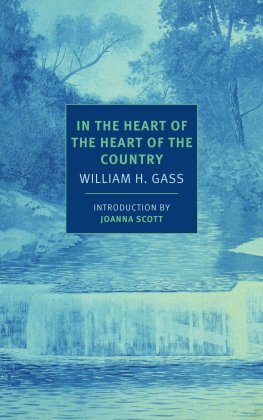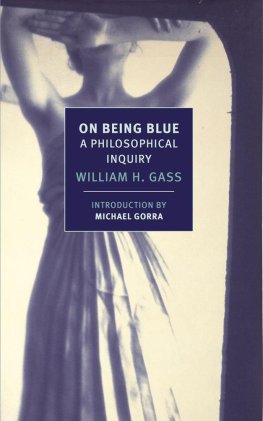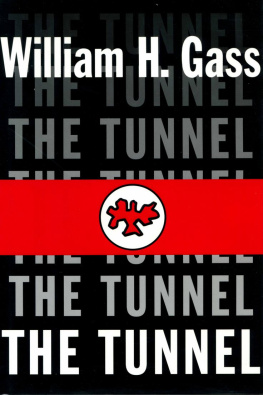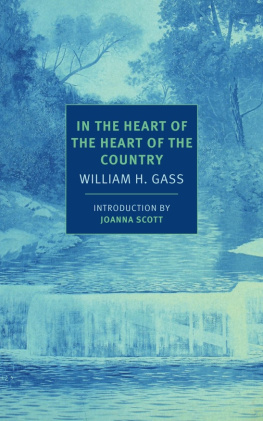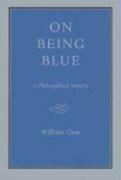William Gass
In the Heart of the Heart of the Country
In the heart of the heart of this collection, deep inside the title story, the narrator contemplates his cat, Mr. Tick: You are a cat you cannot understand you are a cat so easily. The confident Mr. Tick, unlike the narrator, does not worry over his mortality or think about the burden of self-consciousness. He does not care that the past is past. He does not fear possibility or imagine himself as anything other than the cat he is. Mr. Tick spends his time murdering birds and walking across rooftops. Content just to be alive, he moves elegantly, his long tail rhyming with his paws, leaving our forlorn narrator to fend off loneliness on his own, with the only weapon he has at his disposal: words.
Words are free, there for the taking, and William Gass makes sure we are aware of their infinite potential. Words can be used to command, to describe, to denigrate. They can be strung into sentences and bellowed in a song in such a way that from a distance it will seem a harmony, a Strindberg play, a friendship ring. We understand nuance and learn how to prepare for consequence with the help of words. We can make beautiful things with words. Those inclined can dare to treat the medium of language as an inexhaustible source of art.
Art is the business of serious writers, Gass insists. A brilliant essayist as well as one of this nations most important novelists, Gass argues in his essay Philosophy and the Form of Fiction that the task for a serious writer is twofold: He must show or exhibit his world, and to do this he must actually make something, not merely describe something that might be made. In his emphasis on making, Gass is proposing that the meaning generated by a work of fiction goes beyond its mimetic familiarity. The purpose of an imaginative narrative isnt to confirm what we think we already know about reality; rather, it offers a record of the choices, inadvertent or deliberate, the author has made from all the possibilities of language. A fictional cat may reflect qualities of a real cat, but it is better appreciated as a product of the authors agile mind.
The stories that comprise In the Heart of the Heart of the Country first began to appear in periodicals in the late 1950s. For Gass and his generation at that moment, modernism was such a gargantuan precursor that it threatened to obscure the work that followed. Whether they considered literary modernism a failed experiment, characterized by H.G. Wells as a monstrous egotism of artistry, or a grand success that expresses, in Virginia Woolfs estimate, the quick of the mind, novelists beginning their careers in the 1950s and 60s necessarily had to position themselves in response to the dramatic shape-shifting that had just occurred in their genre. Joyces Ulysses, arguably the most influential book of the twentieth century, stood as a particularly powerful model of formal innovation. For those who chose to build off modernism, fiction became a field for radical explorations in narrative form and voice. Writers set out in search of new techniques that could serve as sources of discovery and offer unique opportunities for amplifying the potential meaning of their subject matter.
Looking back over this heady period in American literary culture, John Gardner would claim that no one writing at that moment was willing to live by the old, righteous rules. Fiction, like all art, was supposed to be free from the shackles of rules. Ezra Pounds call to make it new (a slogan that Pound tellingly recycled from Chinese historical sources) continued to reverberate as the defining challenge.
Gardner recognized the need to give these adventurous new writers a venue and in 1960 co-founded the literary journal MSS, based in California. While he was collecting material to publish in the first volume, a story called The Pedersen Kid, by a young writer named William Gass, came to his attention. A fellow editor told Gardner that the story had been rejected at another journal because it had questionable language; doubts had been expressed about meaning and point of view. We know from Gass that he had been sending out the story for seven or eight years before it landed on Gardners desk. Gardner jumped at the opportunity to publish it.
In The Pedersen Kidthe lead story of In the Heart of the Heart of the CountryGass has created a narrative that with its disruptions and immersions is reminiscent of Quentins chapter in The Sound and the Fury. Like Faulkner, Gass does more than depict a boys experiences; he offers a full enactment of a boys confusion. As Jorge struggles to assess the danger of his predicament near the end of the story, even the print takes on dramatic shape in an expression of fear: Hes even come round maybe. Oh no jesus please. Round. At the same time, Gass conveys the physical impact of the setting with unrivaled intensity, offering, through Jorges perception, a Midwestern landscape where snow is as blue as the sky, stars are flakes being born that will not fall, and larks in summer winked with their tails taking off.
Devoted as he is to artistic excellence, Gass has never been cowed by the bold ambitions of the modernists. Just the opposite. In his essays, he pays tribute to writers he associates with what he calls a permanent avant-gardeGertrude Stein, Henry James, Kafka, Beckett, Joyce. Gasss own essential fiction, written over the past half century, offers us a strikingly varied array of forms, all enriched with wit, intense emotion, and provocation, all full of the promise of discovery. He doesnt mind when a writers intelligence is on display, especially since he values the intelligence of a perceptive reader. He reminds us that art is a proven human glory, and that literature shares with all great art the potential to expand our awareness.
In the Heart of the Heart of the Country, first published in 1968, reaches across two great expanses: the harsh, flat exterior landscape of the Midwest, and the mysterious interior landscape of human consciousness. Both landscapes hide secrets. Beware the salesman Pearson, in Gasss story Icicles, who twists his magazine into a roll and with a whack asserts his certainty: Its so clear. Its so easy. Its so clean. In these fictions, Gass shows us that certainty is an elusive prey. Snowdrifts cover evidence of a terrible crime. Typewriter-ribbon tins hide a housewifes obsession. A man goes into his house, closes his door, and closes his eyestheres simply no way of knowing how lonely and empty he is here in the heart of the country.
We travel with Gass through this collection toward a center that beckons, the heart within the heartland. This Midwest, says the narrator of the title story, a dissonance of parts and people, we are a consonance of Towns. Like a man grown fat in everything but heart, we overlabor; our outlook never really urban, never rural either, we enlarge and linger at the same time, as Alice both changed and remained in her story. For Gass born in North Dakota, raised in Ohio, and rooted for the past several decades in St. Louis the American Midwest is home. The region, with all its consonance and dissonance, enriches his literary explorations. The scenery and weather, the noises of its farms and neighborhoods, the conflicts and longings of its people are vividly rendered. But Gasss fictional Midwest is also infused with mysteryepiphanous, he asserts, yet still an enigma.
The stories invite us to follow the authors map and focus our attention. So I have sailed the sea and come / to B / a small town fastened to a field in Indiana. It may seem a barren land from afar, yet up close we see it is teeming with singular characters. Meet the formidable Aunt Pet, who will raise the knob of her walking stick to the level of your eyes. Theres Big Hans, who drops the frozen Pedersen kid on the table, on top of biscuit dough. Rolling and raking, spinning and clipping, waging war against the weeds is Mrs. Mean thats not her real name, but it serves her fine. A gaggle of children run through this book: the boy known only as the Pedersen kid, Jorge, Ames, Nancy, Toll, Tim, Cheryl Pipes, Paula Frosty. And sauntering through the neighborhood goes that dignified cat with his perfect name, Mr. Tick.

